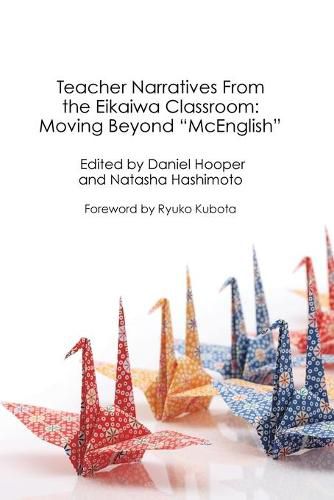Readings Newsletter
Become a Readings Member to make your shopping experience even easier.
Sign in or sign up for free!
You’re not far away from qualifying for FREE standard shipping within Australia
You’ve qualified for FREE standard shipping within Australia
The cart is loading…






This title is printed to order. This book may have been self-published. If so, we cannot guarantee the quality of the content. In the main most books will have gone through the editing process however some may not. We therefore suggest that you be aware of this before ordering this book. If in doubt check either the author or publisher’s details as we are unable to accept any returns unless they are faulty. Please contact us if you have any questions.
This book includes 16 chapters written by current and former eikaiwa (English conversation school) teachers to illustrate a complexity within the eikaiwa profession that has been thus far largely ignored. Through teacher narratives, the authors explore the unique and often problematic world of eikaiwa to present a counter narrative to what the editors regard as blanket stereotyping of a multifaceted and evolving teaching context.
Eikaiwa schools are found in virtually every city and town in Japan. They provide conversation and test-preparation classes for learners of all ages. Those attending eikaiwa may be looking to prepare for an overseas holiday or work placement, achieve a required TOEIC score for their company, or simply enjoy a new hobby and socialise with people from different cultures and backgrounds. Eikaiwa teachers often need to negotiate conflicting demands from students, parents, management, and society at large. Furthermore, opportunities for professional development are scarce and research on this context is virtually non existent. Despite the massive scale of the eikaiwa industry and the varied roles that teachers are required to fulfil within it, expatriate and ELT communities have also tended to stigmatise the work of eikaiwa teachers as being simplistic and uniform. As a result, many former eikaiwa teachers choose to forget their eikaiwa past and the way it shaped them as professionals. This volume provides an important opportunity for eikaiwa teachers to share their stories and for the editors to present a coherent and convincing case for the value that the experiences of working in English conversation schools has for our understanding of teaching and learning languages.
$9.00 standard shipping within Australia
FREE standard shipping within Australia for orders over $100.00
Express & International shipping calculated at checkout
This title is printed to order. This book may have been self-published. If so, we cannot guarantee the quality of the content. In the main most books will have gone through the editing process however some may not. We therefore suggest that you be aware of this before ordering this book. If in doubt check either the author or publisher’s details as we are unable to accept any returns unless they are faulty. Please contact us if you have any questions.
This book includes 16 chapters written by current and former eikaiwa (English conversation school) teachers to illustrate a complexity within the eikaiwa profession that has been thus far largely ignored. Through teacher narratives, the authors explore the unique and often problematic world of eikaiwa to present a counter narrative to what the editors regard as blanket stereotyping of a multifaceted and evolving teaching context.
Eikaiwa schools are found in virtually every city and town in Japan. They provide conversation and test-preparation classes for learners of all ages. Those attending eikaiwa may be looking to prepare for an overseas holiday or work placement, achieve a required TOEIC score for their company, or simply enjoy a new hobby and socialise with people from different cultures and backgrounds. Eikaiwa teachers often need to negotiate conflicting demands from students, parents, management, and society at large. Furthermore, opportunities for professional development are scarce and research on this context is virtually non existent. Despite the massive scale of the eikaiwa industry and the varied roles that teachers are required to fulfil within it, expatriate and ELT communities have also tended to stigmatise the work of eikaiwa teachers as being simplistic and uniform. As a result, many former eikaiwa teachers choose to forget their eikaiwa past and the way it shaped them as professionals. This volume provides an important opportunity for eikaiwa teachers to share their stories and for the editors to present a coherent and convincing case for the value that the experiences of working in English conversation schools has for our understanding of teaching and learning languages.